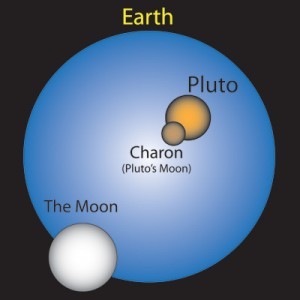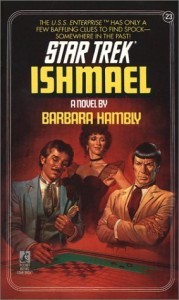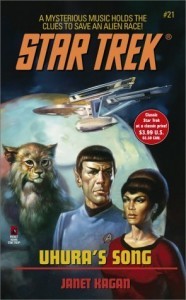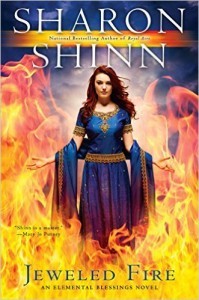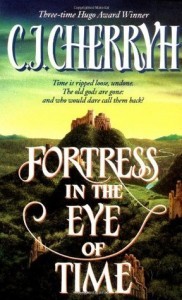Rachel Neumeier's Blog, page 332
July 17, 2015
So what is a cryovolcano like on Pluto?
I figured you were all curious, so here:
A cryovolcano is an icy volcano found on icy bodies, especially moons, in the outer solar system. Cryovolcanoes have been observed directly on Neptune’s moon Triton, during a Voyager II fly-by in 1989, and on Saturn’s moon Enceladus, by the Cassini probe on 27 November 2005. Indirect evidence of cryovolcanism has been found on several other moons and bodies, including Europa, Titan, Ganymede, Miranda, and the trans-Neptunian object Quaoar.
Instead of erupting molten rock, as in a conventional volcano, cryovolcanoes erupt volatiles (low boiling point elements or compounds), like water, ammonia, carbon dioxide, nitrogen, or methane, accompanied by gas-driven solid fragments. This is called cryomagma. A cryovolcano produces plumes that may be a hundred or more degrees hotter than the frozen surface matter. Exposed to the cold and vacuum of space, the plumes quickly solidify, becoming airborne dust. As the gravity is weak on many ice moons, the plume may completely escape the moon’s gravity well, go into an orbit, or crash back down on the surface in another area.
The source of energy of a cryovolcano usually comes from tidal friction, heat that builds up in the core of moons as they bend and distort in the gravity field of the massive gas giants they orbit.
Well, we know that isn’t what’s causing any possible cryovolcanoes on Pluto. What else can theoretically create a cryovolcanoes?
It is also suspected that some moons may have translucent layers of ice that permit light in to heat material beneath it, but have an insulating property that seals in heat and creates a greenhouse effect. This creates pressurized gases in the interior that will escape if there is a route to the surface, thus creating a cryovolcano.
Okay, don’t know if that’s what does it on Pluto, but at least it’s plausible.
Did you already know that Pluto is smaller than our moon? I knew it was itty-bitty, I don’t think I knew that it was quite that small.

July 16, 2015
Everything is linear
For some hard to explain reason, I really got a kick out of this post at the blog Math With Bad Drawings, which I’m sure you all check in with frequently, as I do.
Anyway:
What is the biggest problem facing humanity this week?
A. The threat of Grexit*
B. The bittersweet knowledge that someday, when all of this has passed, we’ll have fewer opportunities to use the amazing word “Grexit”*
C. People thinking functions are linear when they’re SO NOT LINEAR
D. Other (e.g., cat bites)
You see? Share this with your colleagues and I expect hilarity to ensue.
If you answered C, then congratulations! You are probably a teacher of math students ages 13 to 20, and we all share in your pain.
For everyone else (including you poor cat-bitten D folk), what are we talking about? We’re talking about errors like these (warning—mathematical profanity ahead):
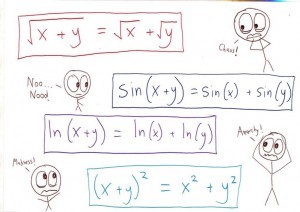
C
NOW the hilarity, right?
Okay, okay, if you don’t teach students algebra ever, then maybe this post won’t strike you as funny, sad, and so very very true.
I don’t blame the kids, of course. These errors are a natural—perhaps even inevitable—byproduct of the way we teach mathematics.
It sure is. Not quite inevitable, I hope, but if we could somehow bottle Ben Orlin (the author of the site) and have him teach ALL the math, then, well, a) everyone would find the above errors funny rather than funny + sad + depressing or else incomprehensible, and b) everyone would coast through algebra, and c) I would never again have to demonstrate to a student that indeed, you cannot distribute an exponent through parentheses, not simply because it is against the rules, but because it does not work.
Also, if by chance you do teach math, this blog is a good one to check in on from time to time. Ben is quite good at conceptualizing errors and seeing why the error is made and how to explain properly why it’s wrong.
The distributive law is crucial. It underlies most of what we do in algebra, such as factoring and “gathering like terms.” So what’s the problem?
It’s that students don’t learn the distributive law as a fact about numbers. They learn it as a fact about parentheses.
And unfortunately, mathematicians use parentheses in two very different ways: first, to group numbers; and second, to designate the inputs of a function.
I knew that. But Ben explains it better.
* I had to google the term.

Pluto!
Ice mountains, canyons, and evidence of geologic activities.
Geologic activity on a tiny little icy planet way out yonder. Who knew?
This active geology needs some source of heat. Previously, such activity has only been seen on icy moons, where it can be explained by “tidal heating” caused by gravitational interactions with a large host planet.
“You do not need tidal heating to power geological activity on icy worlds. That’s a really important discovery we just made this morning,” said Dr Spencer.
They’re talking about the possibility of cryovolcanoes. What a great concept, or at least a great word. Cryovolcanoes! What can those even be? I guess I need to look that up.
UPDATE: Also, a funny Pluto-related What-If at xkcd.

Pick Your Star Trek
So, last night Kate Elliot posed a simple question on Twitter: Which of the various Star Trek franchises was your favorite? Lots of responses, as you might imagine. I read through the comments and there was some convergence on DS9 plus many comments about the excellence of Patrick Stewart, both of which I agree with.
In fact, what I picked was Galaxy Quest and then DS9. (I found on reading through the credits that there were a couple other call-outs for Galaxy Quest, too. I wouldn’t have thought of that if my brother hadn’t years ago commented about Galaxy Quest being the best Star Trek movie.)
Anyway!
Star Trek: The Original. As far as I’m concerned, the viewers brought more to the original ST than was ever actually in the series. Campy acting – I’m talking about Shatner, of course – plus often silly plots and sometimes questionable themes. And I get that miniskirts were seen at the time as a feminist symbol, but today they look so like quite the opposite, not that it’s fair to hold that against the show, and yet. I mean, I love Nichelle Nichols, but she did not get to do much in that series. And today, if you go back and look at the special effects, well.
I’m pretty sure I didn’t see a single commenter declare that the original series was their favorite.
I am sorry now that I didn’t think of calling out for Redshirts, though, because that may not be a TV show or movie, but it is a fun send-up of the original Star Trek. I still like Galaxy Quest better, though.
On the other hand, some of the tie-in novels for the original series are wonderful. I never read many tie-in novels for any other ST franchise, but at the time I read a good many for the original series. I deeply admire authors who can capture the right voices for all the characters – I couldn’t do that. A handful of tie-ins, maybe 18 or so, have survived decades of gradual winnowing in my library, and of these, here are my five favorites, in alphabetical order by author’s name because I love them all and can’t order them that way:
1. My Enemy, My Ally by Diane Duane. Duane wrote other tie-ins, including sequels of this book. This is my favorite. Ael t’ Rlailiiu is a wonderful protagonist and the original crew are captured perfectly and shown to advantage.
2. The Final Reflection by John M Ford. As the former book emphasizes the Romulans, so this one emphasizes the Klingons. I’m not a Klingon fan particularly, and this book features a Klingon protagonist. Human characters are distinctly secondary and the original crew does not appear except in a very brief frame story. Yet, it’s an excellent and compelling story. The Klingons as presented here interfered with my ever accepting the Klingons as they were presented in ST: TNG later.
3. How Much for Just the Planet? by John M Ford. Though Ford wrote both this and the previous book, they could not be more different. The former book is a serious work and a “real” ST tie-in. This one is a Gilbert and Sullivan operetta disguised as a ST tie-in. It is absolutely hysterical . . . no, really, it is a comedy masterpiece . . . but you wouldn’t try to fit it into the canon.
4. Ishmael by Barbara Hambly. Recalling the earlier post about comfort reads, this is one for me. I have no idea how many times I’ve read this story, in which Spock gets stranded on Earth in 1867 in the backwoods logging town of Seattle, with no memory of who he is or what he’s doing there. Hambly did a wonderful job with this, and in retrospect I can see how in some ways it’s right up her alley. You can sure see her wonderful ability to evoke historical settings.
5. Uhura’s Song by Janet Kagan. This is a leisurely story of alien contact, though the frame story lends urgency. The alien species is well drawn, the original crew is also drawn very well, and the new character – Evan Wilson – is brilliant. I so wish Kagan had written more in general and perhaps I wish particularly that she’d written further ST tie-ins, preferably with Evan appearing in them, too.
Every one of those novels is so much better than the Original TV show ever was.
Moving on:
Star Trek: The Next Generation. I didn’t notice many people picking this as their favorite ST franchise, though so many people called out Patrick Stewart as a great actor. I agree on both counts. I watched a lot of ST: TNG – I watched a lot more TV back then – but I can’t say I remember it very fondly. What I disliked about it, in order from mild dislike to fairly intense dislike: Yar, Worf, Beverly Crusher, Riker, Wesley Crusher, and Troi. In other words, I disliked practically the whole crew except Jean-Luc Picard.
I thought Yar and Dr. Crusher were boring, Worf was too often played for comedic effect, Riker was decorative but struck way too many heroic poses, Wesley was just annoying, and the best writing in the world could not have saved Deanna Troi for me, the whole concept of her character was so annoying.
I did like Data, though. And Geordi was okay.
I did try to read one ST: TNG tie-in that was strongly recommended, but I didn’t make it fifty pages. Don’t remember which one it was, sorry.
Star Trek: DS9. Okay, actually, I didn’t watch every season of DS9, but if I were going to get any of the shows on DVD, it’d be this one. I could see myself re-watching it. In stark contrast to TNG, I liked practically every character on DS9, especially Odo and Garek. The show seemed to be more consistently well-written, with better, more complex plotting and better, more complex characterization. A lot of commenters mentioned that the female characters were better drawn on DS9 than on TNG. I absolutely agree, but then I think this was true for most of the male characters, too.
Remember the episode where Garek told one story about his past after another, all of them mutually contradictory? Wasn’t that great? Remember “Our Man Bashir”? Those are a couple of the episodes that have stuck in my head.
I’ve read one DS9 tie-in novel, Fallen Heroes by Dafydd ab Hugh, which was recommended to me. I liked it quite a bit and still have it on my shelves. It’s got a time travel element that complicates the situation and highlights Quark and Odo. Normally I dislike Quark, but ab Hugh made me like him in this story.
Star Trek: Voyager. Best forgotten. It had so much potential. I loved the initial set up. Unfortunately, I hated almost everything about the way the series developed and I don’t think I watched it at all after the first season.
Star Trek: Enterprise. Seriously, this was the best they could do? I watched the first few episodes with a lot of hope that gradually dwindled – actually, I guess it rapidly dwindled – and then I stopped watching it. How long did that show even last? Oh, I see that according to Wikipedia, it ran for five seasons. I didn’t get the impression it ever got better, but Wikipedia suggests the final season wasn’t bad.
While we’re on the subject, I did like most of the movies, especially “Wrath of Khan.” It was cheating to bring Spock back, but personally I was glad they did because who wants to lose Spock? I don’t know how well all those movies would hold up if I watched them again now, though. I must admit I never saw the ST: TNG movies. Wikipedia says there were four of them. I didn’t even know that.
The first ST reboot movie was a lot of fun, I thought. Great young McCoy, good young Kirk, good young Scotty, decent young Spock, and though I know some fans objected, I personally got a kick out of Uhura and Spock being an item. I didn’t see the second reboot movie, but that’s just because I don’t see a lot of movies, not because I was avoiding it. How was it? Should I seek it out? I see there is a third planned for next year.
So, now: how do you rate the different Star Trek franchises?
And, if I missed your favorite ST tie-in, especially anything published within the last ten years or so, especially Original Series tie-ins, let me know, right? Because I definitely love the universe when it’s done well, and I haven’t looked at tie-in novels for years. Decades. It’s hard to browse when you have no bookstores within eighty miles, and tie-ins cry out for browsing rather than just trying to pick them out online.

July 15, 2015
Most Hyped Book I’ve Never Read
Okay, as always I’m behind on this Top Ten topic, which I just noticed this morning at Chachic’s Book Nook.
I’ve read four of the ten “hyped” titles on Chachic’s list — Leckie’s ANCILLARY JUSTICE, Walton’s AMONG OTHERS, Jemisin’s THE HUNDRED THOUSAND KINGDOMS, and Sanderson’s “The Emperor’s Soul,” which is of course a novella, but hey.
The others, no, haven’t read them. A couple, I didn’t know they were being hyped / getting a lot of buzz / on a lot of bloggers’ radar / whatever your criteria for hyped books might be. I’ve never even heard of Ahdieh’s THE WRATH AND THE DAWN. Evocative title, I must say.
But for me, the single hyped book that instantly springs to mind is:
THE FAULT IN OUR STARS
I haven’t read it. I know, right? But it sounds like such a tear-jerker. A YA contemporary romance tear-jerker. I don’t know.
Also, it’s just so so so SO hyped, the book-as-phenomenon is kind of a turn-off. Seeing a book mentioned on half a dozen of the blogs I follow: that’s an invitation to look it up. Seeing it mentioned in every tweet for a month, that’s an invitation to aovid both twitter and the book itself out of sheer irritation. Or is that just me?

Marie Brennan and Mary Robinette Kowel: fanfic for each other’s stories
Via tor.com, I see that Marie Brennan (Tropic of Serpents) and Mary Robinette Kowel (Glamour in Glass) traded fanfic set in each other’s worlds. I think that’s charming.
Here is a link to Marie Brennan’s story: “A Classical Education.”
And here is a link to Mary Robinette Kowel’s story, “A Study in Serpents.”
I haven’t read either story yet, but I expect I will read at least the latter. I haven’t read any of Kowel’s Glamourist History books, so I doubt I’d appreciate fanfic set in that world.

July 14, 2015
What do you re-read for comfort?
This post by Liz Bourke at tor.com makes some choices that seem strange to me.
Like, Chalion? Okay, check, the Chalion series by LMB could count as comfort reads. I can understand that.
But, STAY by Niccola Griffith? It’s a very intense book. That whole series is very intense. I loved it, oddly particularly the middle book, which I have re-read several times. But it is so not a comfort read.
Of course, carefully reading Liz Bourke’s post, I see that she doesn’t exactly consider that one a comfort read, exactly.
Anyway, I totally agree with this bit:
Rereading a familiar book is like revisiting that first great escape, that sense of liberation, without any of the apprehension that can attend on reading a novel for the first time. (Will it be any good? Will I like it? Will terrible things befall these characters I’ve come to care about? With a reread, all these questions are already answered.)
Yes, sometimes that is indeed exactly what you want.
For me, LMB’s Sharing Knife series fits the bill for a comfort read more than any of her other works. If I’ve got a cold or the flu, it’s one I’m particularly likely to reach for, and how could you better define a comfort novel? And Shinn’s Elemental Blessings novels, those are quintessential comfort reads for me. And, yes, in fact, The Goblin Emperor, which I have already gone back to and it only came out last year. Oh, Andrea Host’s Touchstone trilogy! That’s a comfort read now, particularly the Gratuitous Epilogue, which was warm and fuzzy even the first time I read it.
On the other hand, Ancillary Justice, no. I will probably re-read that series from the top next year when the third book comes out, and I will enjoy it, but not as comfort reads in any sense.
I will also almost certainly wait till Wexler’s series is finished and then re-read from the top, because I was just thinking the other day about how much I am looking forward to re-reading The Thousand Names. But even though I will be happily confident that everything will in fact work out in the first book, I won’t consider that a comfort read, either. Though I will totally enjoy it. A word of warning: I saw somewhere that the third book ends on a cliffhanger. Hence waiting for the fourth.
How about you? Comfort reads versus books that you definitely enjoy re-reading but would NOT consider comfort reads?

The Really Big One
Whoa. Did you all see Kathryn Schulz’s article in The New Yorker: “The Really Big One”?
It’s an extremely well-written — indeed, captivating — article about an earthquake zone I’d never heard of, north of the San Andreas fault, where the continental plate is hung up on the oceanic plate and being held back and compressed.
The last very big earthquake appears to have hit that region in the year 1700 AD. Here’s what’s expected when the next big one — for which we appear overdue — hits:
When the next very big earthquake hits, the northwest edge of the continent, from California to Canada and the continental shelf to the Cascades, will drop by as much as six feet and rebound thirty to a hundred feet to the west—losing, within minutes, all the elevation and compression it has gained over centuries. Some of that shift will take place beneath the ocean, displacing a colossal quantity of seawater. … The water will surge upward into a huge hill, then promptly collapse. One side will rush west, toward Japan. The other side will rush east, in a seven-hundred-mile liquid wall that will reach the Northwest coast, on average, fifteen minutes after the earthquake begins. By the time the shaking has ceased and the tsunami has receded, the region will be unrecognizable. Kenneth Murphy, who directs FEMA’s Region X, the division responsible for Oregon, Washington, Idaho, and Alaska, says, “Our operating assumption is that everything west of Interstate 5 will be toast.” In the Pacific Northwest, everything west of Interstate 5 covers some hundred and forty thousand square miles, including Seattle, Tacoma, Portland, Eugene, Salem (the capital city of Oregon), Olympia (the capital of Washington), and some seven million people.
I mean, wow. Now I know how I would start a disaster or postapocalyptic novel, if I were writing one.
A grown man is knocked over by ankle-deep water moving at 6.7 miles an hour. The tsunami will be moving more than twice that fast when it arrives. Its height will vary with the contours of the coast, from twenty feet to more than a hundred feet. It will not look like a Hokusai-style wave, rising up from the surface of the sea and breaking from above. It will look like the whole ocean, elevated, overtaking land. Nor will it be made only of water—not once it reaches the shore. It will be a five-story deluge of pickup trucks and doorframes and cinder blocks and fishing boats and utility poles and everything else that once constituted the coastal towns of the Pacific Northwest.
Unbelievable. Or rather, unthinkable. Or unfortunately, everyone in that region appears to be treating the possibility as both unthinkable and unbelievable, because nothing much is being done to help anybody survive this disaster when it does occur. Which it will; it has to; you can’t block an entire continental plate forever; eventually it’ll have to straighten out. Boom. Tomorrow or in a hundred years, who knows, but if the plate’s already been hung up this long, well, it’s definitely under a lot of pressure.
Of course the whole region was developed before anybody even knew about the fault or how it works. But we’ve known about it for a couple of decades now, and no one has even troubled to put in an early warning system — the kind that Japan has — the kind that would let authorities shut down power stations and warn hospitals and so on.
Anyway, yeah, okay, now I’m happier at being practically on top of the New Madrid fault. At least if this one lets go, we won’t get a tsunami. If I lived in Seattle, well, honestly, after this article, I’m just glad I *don’t* live in Seattle. Any of you all who *do* live in the Pacific Northwest, well . . .

July 13, 2015
Don’t hold your breath, but this is interesting —
You may already know that Sharon Shinn has the 3rd Elemental Blessings book scheduled for release this fall —
As one of the four princesses of Welce, Corene always thought she might one day become queen. Only circumstances changed, leaving fiery Corene with nothing to show for a life spent playing the game of court intrigue—until a chance arises to become the ruler of a nearby country.
After stowing away on a ship bound for Malinqua with her loyal bodyguard, Foley, Corene must try to win the throne by making a play to marry one of the empress’s three nephews. But Corene is not the only foreign princess in search of a crown.
Unaccustomed to being anyone’s friend, Corene is surprised to find companionship among her fellow competitors. But behind Malinqua’s beautiful facade lie many secrets.
The visiting princesses are more hostages than guests. And as the deadly nature of the court is revealed, Corene must rely on both her new allies and Foley’s unwavering protection—for the game she has entered is far more perilous than she ever imagined…
Anyway, I knew this one was scheduled for release. And I don’t care what it’s about particularly, since I just really enjoy this series. I did know it featured Corene, though. Also, I hear Sharon Shinn has the rough draft of the 4th book done, too, which is excellent. But here is the bit you may not know: She’s got a graphic novel coming out in 2017.
I know, I know, 2017, that seems a long way away, although less so to me since I myself am working right now on a book that’s due out in 2017.
Anyway, here is an interview with Sharon about that.
Shinn says:
I’m not sure how writers and artists of other graphic novels join forces, but this is how the process worked for me: First I produced my final script. Then Mark Siegel, my editor at First Second, assembled information about 10 or 12 different artists and had me look through their portfolios to see what kind of styles appealed to me. I went into this project not knowing much about graphic novels, so I wasn’t sure if I’d have strong preferences, but it turned out I did! One artist’s work seemed too cartoony, another one’s felt too dark and angry. But Molly’s imagery had great movement and color, and I loved the way she showed the personalities of her various characters.
As you’d probably expect, there’s a strong thread of romance in the story. It sounds like an SF type of world, with an alien invasion in the backstory. Click through to read the whole interview and see a couple of panels.

Where to start with CJ Cherryh
Now, now, listen, I never for a moment meant to suggest that anybody should start with CJ Cherryh by opening up any volume of the FOREIGNER series. No no no. That is a terrible idea, or at least terrible-ish. I think there are way better places to start. So, Kim and everybody else who finds it difficult to tell where to start with an author who has at last count about one zillion titles out there:
I see many of you suggest other non-Foreigner books to start with. I’m sure we won’t all agree, and in fact I know that for sure cause I already disagree with some of you:
Downbelow Station — Yes, it won the Hugo. No, it is a bad place to start. The cast of thousands thing that Mike mentions is the kicker. I think that makes it a tough book to get into for many people. I read it and I even enjoyed it, but it isn’t one of Cherryh’s that I go back to over and over. I do go back over and over to:
CYTEEN. Sure, you already understand the universe if you’ve read other related books such as Downbelow Station, but nevertheless CYTEEN stands alone perfectly well. Granted, when I re-read it, I skim lightly over the early part and start to really read it when Young Ari appears. So I would suggest that a reader be prepared to give the book some time to develop. Nevertheless, this is a tremendously effective, powerful story. New to Cherryh? If you’re into hard sociological SF, tackle CYTEEN and I hope you won’t be disappointed.
I did like Merchanter’s Luck a lot, but imo it seems a minor work compared to CYTEEN.
Rusalka trilogy — no no no. Not to say that some readers won’t agree with Elaine T’s daughter, who found this a good entry, but I loathed this trilogy and eventually gave it away. It is one of the few Cherryh works that absolutely does not work for me.
FORTRESS IN THE EYE OF TIME — yes yes yes. There are four books in the series, but this first one stands alone. In my opinion, if you are into fantasy rather than SF, this is one of Cherryh’s strongest fantasies. If you love it, great, read the next couple. I would personally suggest giving the last book in this world a miss. Don’t blame me if you read it and kinda wish you hadn’t.
Other places to start with CJC:
CHANUR series — As long as a reader likes SF, then I agree with the lot of you, this is an excellent series. Go for it! It doesn’t even have 200 pages of intro before the story really starts. This is one where I really, really enjoyed the last book in the world, even though it is not really part of the series but rather a standalone companion book.
CUCKOO’S EGG — this short little SF novel is perfect in every way. Not sure you want to commit to a weighty tome or a series? Grab this one. It is out of print and not available in ebook form, but used copies are available for pennies, so pick one up and introduce yourself to Cherryh.
The same goes for “The Scapegoat,” a novella in ALIEN STARS, which is a deeply affecting story. If you want to try Cherryh with shorter works, or shoot, if you’ve just never seen a copy of this novella — do yourself a favor and pick up the anthology. Maybe you’ll even like the other stories in it, I dunno, I’ve forgotten them all, but “The Scapegoat” is absolutely beautiful.
Not a single one of those was my actual intro to Cherryh. I think that might have been Arafel’s Saga or maybe the Mri trilogy. But looking over my massive CJC collection, honestly, the above are the ones I would particularly point out as good starting places if Cherryh is new to you.
You may all now argue in the comments…


